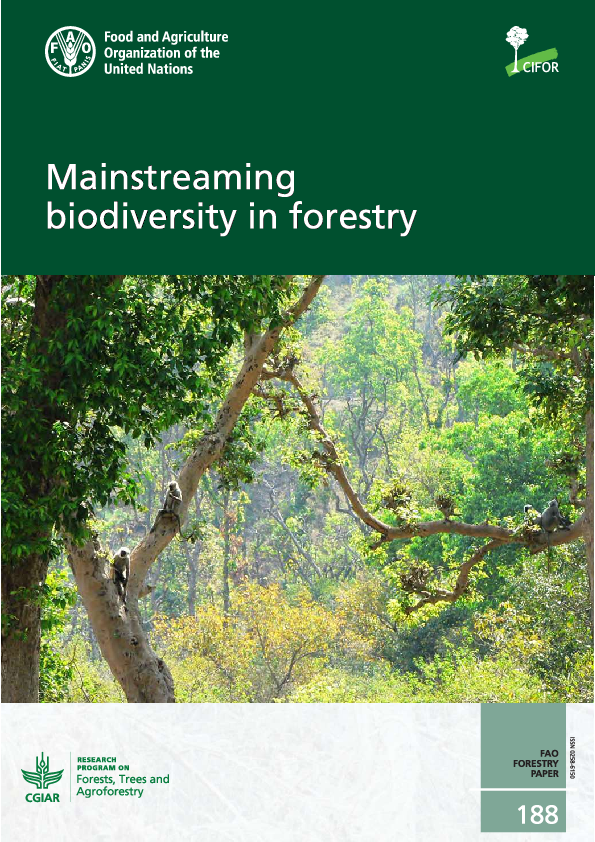- Share this article
- Subscribe to our newsletter
Mainstreaming Biodiversity in Forestry
The importance of sustainable forest management in halting deforestation, forest degradation and the decline in the supply of ecosystem services is widely recognised. But much more needs to be done to embed the conservation and sustainable use of biodiversity at every level of forest management. This is the key message of Mainstreaming Biodiversity in Forestry, a report launched at the 8th World Forest Week in October 2022.
The report was produced in partnership by the UN Food and Agriculture Organization (FAO), the Center for International Forestry Research (CIFOR), and the CGIAR Research Program on Forests, Trees and Agroforestry.
Deforestation is the greatest driver of biodiversity loss. Around 10 million hectares of land are lost to deforestation each year, mainly due to agricultural expansion. Other threats include the overharvesting of timber, invasive species, climate change, desertification and forest fires.
The world’s forests provide habitats for about 80 per cent of amphibian species, 75 per cent of bird species and 68 per cent of mammal species. In addition, about 60 per cent of all vascular plants occur in tropical forests.
The report assesses tools and methods for integrating the conservation and sustainable use of biodiversity into forest policy, strategy and management. Drawing on case studies from the Democratic Republic of the Congo, Ethiopia, Finland, Japan, Malaysia, Mexico, Peru and the United Kingdom, it explores lessons learnt and identifies good practices. The report also makes recommendations for actions that governments and development partners can take to facilitate the mainstreaming of biodiversity in forest management:
- Halting and reversing deforestation
- Combating illegal and unregulated forest activities
- Recognising the forest tenure of indigenous peoples and local communities
- Preventing the conversion of natural forests into monospecific forest plantations
- Ensuring the sustainable management of harvested species
- Managing and controlling invasive and overabundant species
- Leveraging global momentum on restoration to enhance biodiversity conservation
- Adopting a multisectoral perspective
- Providing economic incentives
- Facilitating market-based instruments
- Investing in knowledge and capacity development
(FAO/ile)





Add a comment
Be the First to Comment